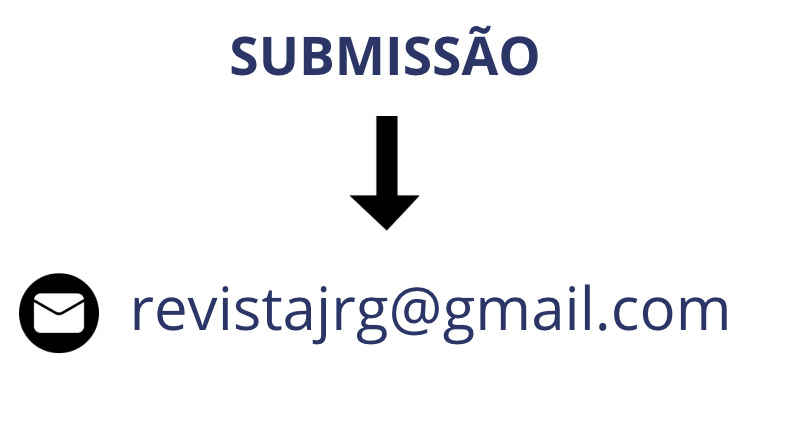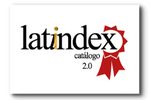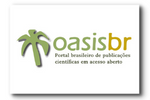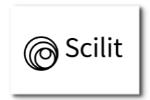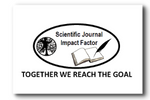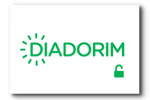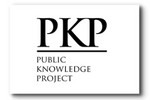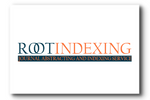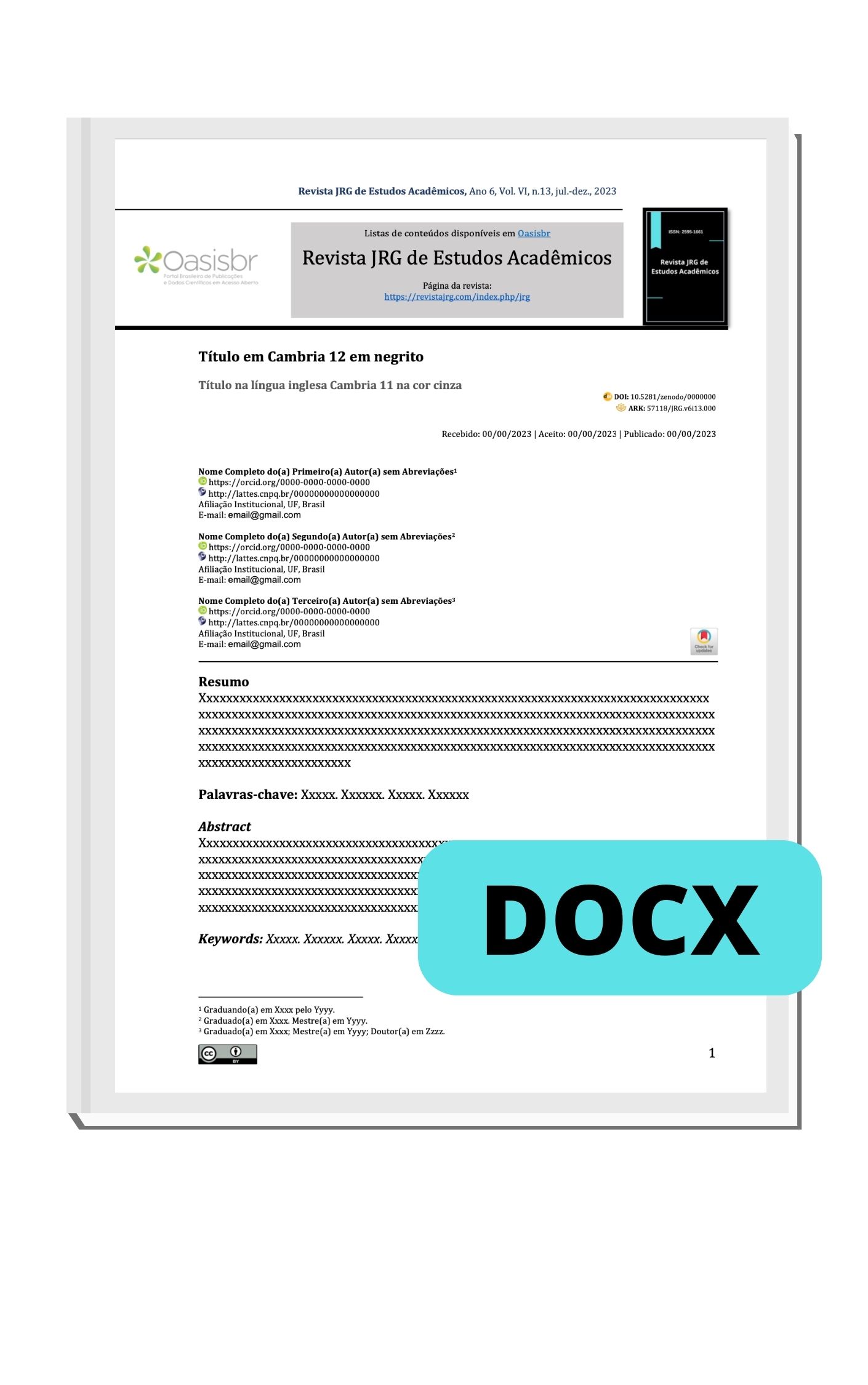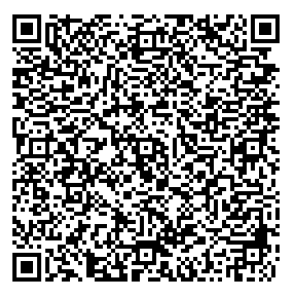Clinical and epidemiological aspects of autism spector disorder in children: a global overview
DOI:
https://doi.org/10.55892/jrg.v8i19.2076Keywords:
Epidemiology, Childhood, Symptoms, Autism Spectrum DisorderAbstract
Introduction: Autism spectrum disorder (ASD) is a neurodevelopmental disorder described by the Diagnosis and Statistical Manual of Mental Disorders (DSM-5) as a persistent deficit in communication and social interactions in different environments, involving limitations in social reciprocity, in the use of gestures and facial expressions during interactions, as well as in the ability to create, maintain and interpret interpersonal bonds. Additionally, behaviors characterized by repetitive and restricted patterns are observed, both in actions and in interests and in daily activities. The present study sought to evaluate the clinical aspects of this disorder in children, as well as its epidemiology in the global context. Methods: Narrative review of the literature in the Lilacs, PubMed, Virtual Health Library and Scielo databases, using the keywords Epidemiology, General Symptoms, Autism Spectrum Disorder, Childhood with the Boolean operator and. Twenty-two full articles published from 2000 to November 2024 were included. Twenty-six articles that were not aligned with the proposed theme were excluded after applying the inclusion and exclusion criteria. Results and Discussion: Studies indicate that the broad spectrum of ASD allows variation in the presence and intensity of some symptoms; however, clinically it presents as a deficit in social interaction and communication, associated with restrictive and repetitive behavior patterns. Regarding the epidemiological aspect, a higher prevalence was observed in males, advanced parental age, perinatal and neonatal complications, in addition to prenatal exposures such as maternal infections, obesity, gestational diabetes, use of antidepressants from the selective serotonin reuptake inhibitor (SSRI) class, antibiotics, and exposure to toxins. Ethnic, socioeconomic, and regional factors remain controversial due to the lack of standardization of the analysis method. Conclusion: It is concluded that knowledge of the clinical and epidemiological aspects of ASD is essential to optimize the clinical management of this disorder.
Downloads
References
AMERICAN PSYCHIATRIC ASSOCIATION. Manual diagnóstico e estatístico de transtornos mentais: DSM‑5. 5. ed. Porto Alegre: Artmed, 2014.
AMERICAN PSYCHIATRIC ASSOCIATION. Diagnostic and Statistical Manual of Mental Disorders: 5th edition, Text Revision (DSM‑5‑TR). Washington, DC: American Psychiatric Association Publishing, 2022. DOI: 10.1176/appi.books.9780890425787.
AYLWARD, B. S. et al. Racial, ethnic, and sociodemographic disparities in diagnosis of children with autism spectrum disorder. Journal of Developmental & Behavioral Pediatrics, v. 42, n. 8, p. 682–689, 2021. DOI: 10.1097/DBP.0000000000000996.
CASTILLO, A. et al. Symbolic play among children with autism spectrum disorder: a scoping review. PMC, 2021.
CENTERS FOR DISEASE CONTROL AND PREVENTION. Autism prevalence higher, according to data from 11 ADDM communities [Press release], 23 mar. 2023. Disponível em: https://www.cdc.gov/media/releases/2023/p0323-autism.html.
EVANS, B. et al. The metamorphosis of autism: a history of child development in Britain. Manchester: Manchester University Press, 2017. Cap. 1. Disponível em: https://www.ncbi.nlm.nih.gov/books/NBK436845/.
FOMBONNE, E. et al. Epidemiological surveys of ASD: advances and remaining challenges. Journal of Autism and Developmental Disorders, v. 51, n. 12, p. 4271–4290, 2021. DOI: 10.1007/S10803‑021‑05005‑9.
GALLIN, Z. et al. Racial differences in the prevalence of autism spectrum disorder: a systematic review. Journal of Autism and Developmental Disorders, 2024. DOI: 10.1007/s10803‑024‑06403‑5.
GARDENER, H. et al. Prenatal risk factors for autism: comprehensive meta-analysis. The British Journal of Psychiatry, v. 195, n. 1, p. 7–14, 2009. DOI: 10.1192/bjp.bp.108.051672.
HULL, L. et al. The female autism phenotype and camouflaging: a narrative review. Review Journal of Autism and Developmental Disorders, v. 7, p. 306–317, 2020. DOI: 10.1007/s40489‑020‑00197‑9.
JENABI, E. et al. The association between parental consanguineous and the risk of autism spectrum disorders: a case‑control study. International Journal of Developmental Disabilities, p. 1–9, 2025. DOI: 10.1080/20473869.2025.2487874.
LI, Y.‑A. et al. Epidemiology of autism spectrum disorders: Global burden of disease 2019 and bibliometric analysis of risk factors. Frontiers in Pediatrics, 10, 2022. DOI: 10.3389/fped.2022.972809.
LOVE, C. et al. Prenatal environmental risk factors for autism spectrum disorder and their potential mechanisms. BMC Medicine, 22, art. 393, 2024. DOI: 10.1186/s12916‑024‑03617‑3.
NOFAL, H. A. et al. Epidemiological, clinical and psychometric aspects of autism spectrum disorder among children in Zagazig University Hospital. Egyptian Family Medicine Journal, v. 4, n. 2, p. 80–95, 2020. DOI: 10.21608/EFMJ.2020.20985.1006.
PAULA, C. S. et al. Brief report: prevalence of pervasive developmental disorder in Brazil: a pilot study. Journal of Autism and Developmental Disorders, v. 41, n. 12, p. 1738–1742, 2011. DOI: 10.1007/s10803‑011‑1200‑6.
RUPARELIA, K. et al. Investigação das evidências sobre endofenótipos comportamentais, cognitivos e psiquiátricos no autismo: uma revisão sistemática. Autism Research and Treatment, 2017, art. ID 6346912. DOI: 10.1155/2017/6346912.
SAMADI, S. A. et al. Overview of services for autism spectrum disorders (ASD) in low‑ and middle‑income countries (LMICs) and among immigrants and minority groups in high‑income countries (HICs). Brain Sciences, v. 12, n. 12, p. 1682, 2022. DOI: 10.3390/brainsci12121682.
SUKHERA, J. et al. Narrative Reviews: Flexible, Rigorous, and Practical. Journal of Graduate Medical Education, v. 14, n. 4, p. 414–417, ago. 2022. DOI: 10.4300/JGME‑D‑22‑00480.1.
WERLING, D. M. et al. Diferenças sexuais nos transtornos do espectro do autismo. Current Opinion in Neurology, v. 26, n. 2, p. 146–153, abr. 2013. DOI: 10.1097/WCO.0b013e32835ee548.
WORLD HEALTH ORGANIZATION. Autism spectrum disorders. Geneva: WHO, 2023. Disponível em: https://www.who.int/news-room/fact-sheets/detail/autism-spectrum-disorders.
WORLD HEALTH ORGANIZATION. Autism spectrum disorders. WHO Fact Sheet. Disponível em: https://www.who.int/news-room/fact-sheets/detail/autism-spectrum-disorders.
YU, Y. et al. Identification, evaluation, and management of children with autism spectrum disorder. Pediatrics, 2020.




